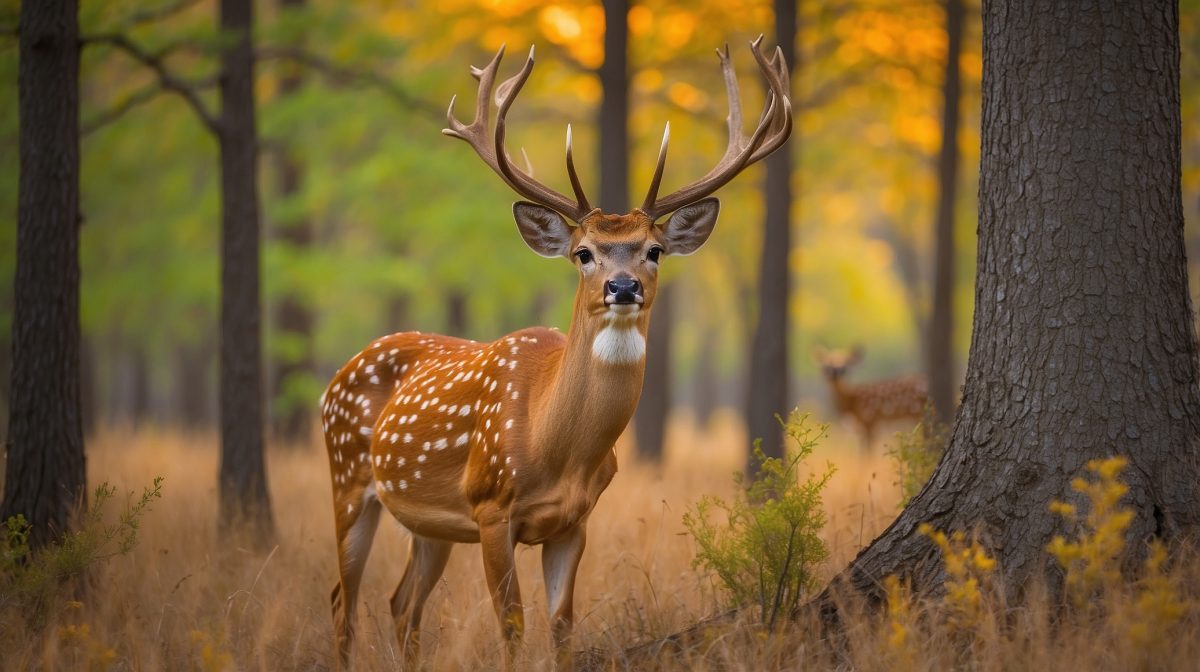The Arrival of Axis Deer in Texas
Now, the Axis deer, also known as the chital, ain’t originally from around these parts. They hail from India but found their way to Texas Hill Country back in the 1930s. These deer were brought over for game on private ranches, and boy, did they take to our land like a duck to water. The initial populations may have started small, but these deer are survivors and their numbers started growin’ faster than a summer weed.
Over time, the Axis deer’s population has grown substantially, spreadin’ out across the region. They’ve found a second home in the diverse habitats of Texas, from the thick brush to the open fields. And I’ll tell ya, their ability to thrive in our environment has been nothin’ short of impressive. It’s a testament to their adaptability and the welcoming nature of Texas Hill Country.
Ecological Impact on Texas Hill Country
Now, let’s talk about how these Axis deer have fit into the local ecosystem. These critters are hardy, and they’ve adapted to Texas like a native. With their preference for grass and other vegetation, they’ve carved out a niche that’s allowed them to flourish. But it ain’t all sunshine and rainbows; their success has come at a cost. Axis deer have been known to compete with our native white-tailed deer and other wildlife, which can stir up the pot when it comes to biodiversity.
The interaction with local flora has led to some changes in our habitats as well. These deer have a hearty appetite, and their grazing habits can transform the landscape over time. It’s a delicate balance, seein’ how the introduction of a non-native species can ripple through the ecosystem, affectin’ everything from the smallest plant to the largest predator.
Economic and Recreational Contributions
Axis deer have become quite the draw for hunters far and wide, bringin’ in a pretty penny for the local economy. The rise of Axis deer hunting has been a boon for ranchers and outfitters, with folks eager to bag one of these exotic trophies. And it ain’t just the thrill of the hunt that’s bringin’ in the dollars; it’s the whole experience, from the chase to the camaraderie of the hunting community.
Guided trophy hunts for Axis deer are particularly popular, and places like the JL Bar Ranch Resort have become renowned for their offerings. These hunts provide an opportunity for folks to experience the thrill of the chase in a controlled, sustainable manner. It’s about more than just the hunt; it’s about respectin’ the animal and the land, and that’s somethin’ we take to heart here in Texas.
Axis Deer Management and Conservation Efforts
As responsible stewards of the land, it’s important to balance the presence of Axis deer with the health of our native ecosystems. Conservation objectives often require us to keep their populations in check, and that’s where wildlife managers and private landowners come into play. They use a variety of strategies, from habitat management to controlled hunts, to ensure that the Axis deer don’t overrun our countryside.
Hunting plays a critical role in this balance, helpin’ to regulate the Axis deer numbers while also providing recreational opportunities. It’s a way to maintain the ecological integrity of our land while also honoring our hunting heritage. By workin’ together, we can ensure that the Axis deer remain a valued part of Texas without compromisin’ the health of our native species and habitats.
The Future of Axis Deer in Texas
Lookin’ ahead, the future of Axis deer in Texas is as wide open as a West Texas highway. Predictions for their populations and ecological role vary, but one thing’s for sure: they’re here to stay. As we continue to monitor and manage their numbers, we’ll face challenges and opportunities alike. Landowners and conservationists will need to collaborate to ensure that these deer contribute positively to our ecosystems and economy.
The allure of Axis deer hunting shows no signs of waning, and it remains an integral part of Texas culture. The thrill of the hunt, the beauty of the animal, and the tradition it upholds are all reasons why Axis deer will continue to captivate hunters for generations to come. It’s up to us to ensure that this tradition can carry on in harmony with our environment.
Conclusion
To wrap things up, the Axis deer’s story in Texas is one of both beauty and complexity. As these creatures continue to roam our lands, we must be mindful of their impact while appreciating the unique hunting opportunities they provide. It’s a fine line to walk between conservation and recreation, but here in the Texas Hill Country, we’re committed to doin’ it right. So, let’s keep our boots on the ground and our eyes on the horizon as we navigate the future of Axis deer in our great state.
FAQs
When were Axis deer first introduced to Texas?
Axis deer were first introduced to Texas in the 1930s for game hunting on private ranches.
How do Axis deer affect native wildlife in Texas?
Axis deer compete with native species for resources and can affect biodiversity and habitat structure.
What makes Axis deer hunting so popular in Texas?
Axis deer hunting is popular due to the challenge of the hunt, the beauty of the animal, and the unique trophy opportunity it presents.
Are there any regulations in place to manage Axis deer populations?
Yes, there are regulations and management strategies in place, including controlled hunts, to manage Axis deer populations.
How can I experience a guided Axis deer hunt in the Texas Hill Country?
You can experience a guided Axis deer hunt by booking with a reputable outfitter or ranch, such as the JL Bar Ranch Resort, known for sustainable hunting practices.


